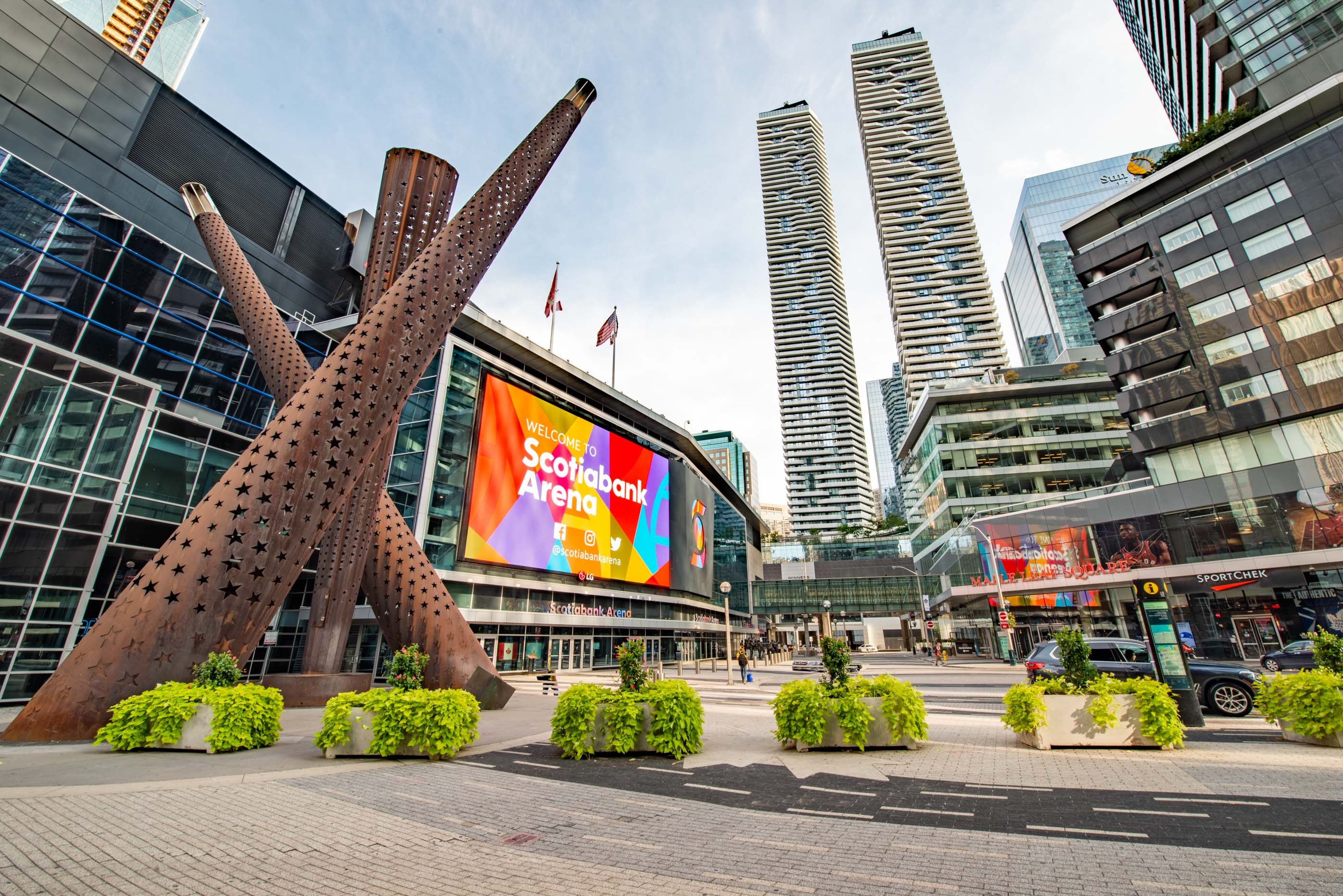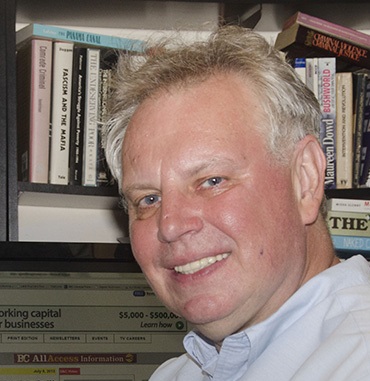Riedel Announces Three Major Tech Deals
Game Creek Video, University of Notre Dame and Scotiabank Arena have all selected Riedel solutions

LAS VEGAS—At the 2025 NAB Show, Riedel Communications has announced three separate deals with the University of Notre Dame, Game Creek Video and the Scotiabank Arena to supply them with a variety of technologies and solutions for sports production and OB trucks.
In one deal, Riedel announced that outside broadcast (OB) production company Game Creek Video has chosen Riedel’s advanced solutions for its newest OB trucks. The trucks, which are being built for two major U.S. broadcast/streaming entities to cover their largest sporting productions, involved two sets of interconnected A, B, and C units. Those trucks will use the same Riedel Artist intercom system as the broadcasters use in their fixed facilities, the companies said.
The trucks are equipped with the Riedel Artist ecosystem consisting of an Artist digital intercom matrix, SmartPanels and Riedel Bolero wireless beltpacks to enable high-fidelity communications during live productions, and the Riedel MediorNet FusioN stand-alone IP converters to streamline signal delivery.
"Our customers were eager for us to implement Riedel’s solution, and we always take their input seriously," said Pat Sullivan, president of Game Creek Video. "These trucks are built for the largest productions in the United States, and Riedel’s commitment to supporting us at that level was a major factor in our decision."
Eliminating the need for a large, centralized, video gateway solution, Game Creek is using the Riedel FusioN line of gateway products to deliver UHD outputs to local monitors throughout each of the three-truck systems.
In this setup, 80 small FusioN 3B devices sit behind all of the monitors in each three-truck system —driving two UHD displays. FusioN 3B takes SMPTE ST 2110 signals all the way out to the edge (to the monitors). Once the ST 2110 signals reach the monitors, FusioN 3B converts them to SDI. By using ST 2110 for signal exchange, Game Creek cut down on the number of interconnects and simplified signal-sharing between systems. Also, the lack of a centralized gateway meant Game Creek could reduce the amount of wire (and weight) inside the trucks.
Riedel reported that the Artist digital matrix intercom system is one of the most important components of the new trucks because its compact footprint has made it possible to go from a large, centralized intercom system down to a small 2-RU singular device.
Get the TV Tech Newsletter
The professional video industry's #1 source for news, trends and product and tech information. Sign up below.
Game Creek deployed one Artist-1024 node in each A unit, using 768 ports to support the entire three-truck system. This system connects with both legacy camera setups and ST 2110-capable CCUs, simplifying integration.
While currently only used for intercom, Riedel’s app-based SmartPanels go beyond intercom and the companies reported that Game Creek is exploring further uses for the Artist system in audio monitoring. Keith Martin, director of technology at Game Creek Video, explained that the goal was to push the boundaries of traditional mobile production, moving away from heavy, centralized systems to a more distributed, lightweight solution that fits into the smaller form factors required for today’s fast-paced, mobile production environments.
Game Creek has about 90 Riedel SmartPanel RSP-1232HL interfaces at operator stations inside the trucks, plus a few for field deployment to communicate with crew members throughout the venue. Game Creek has also added the Bolero wireless intercom system, giving operators inside the truck constant access to people out in the field and vice versa. The flagship trucks, built for major U.S. sports productions, will not only support high-profile broadcasts but also have the flexibility to cater to other events and customer needs.
In terms of Notre Dame, Riedel announced that the University has successfully implemented Riedel’s RefBox solution, part of the company’s SimplyLive Production Suite, to streamline the way referees review plays and make critical decisions during on-campus sports events, including lacrosse and soccer, with a view to expanding to baseball and softball in the future. The university's decision to adopt RefBox stemmed from the need for a flexible and easy-to-use replay system.
“Riedel’s RefBox has truly transformed our officiating process — it's the most intuitive replay system our officials have ever used. It has significantly enhanced our ability to manage referee reviews. The response from both our referees and game management team has been overwhelmingly positive, with particular praise for RefBox’s user-friendly interface and impressive efficiency,” said Scott Rinehart, senior director at Notre Dame Studios. “What truly sets the RefBox apart is how it empowers our referees to conduct their own replay analysis independently. They don't need to communicate with a third party or rely on someone else's interpretation — it's just them and the views — while direct interaction allows officials to make decisions quickly and confidently, significantly enhancing the overall officiating experience and flow of games."
Beyond implementing RefBox to streamline officiating, Notre Dame has also explored using Riedel’s SimplyLive system for production purposes, leveraging its native NDI capabilities to stream and pull replays of club rugby matches and other events.
“The ability to deploy RefBox across multiple venues with minimal setup time has significantly enhanced our game day operations. We can literally roll it out, plug it in, and turn it on, and it’s ready to go, taking just 10 minutes to verify all inputs are correct, with all configurations handled server-side and no user setup required,” said Shawn DeWeerd, a video engineer at the University of Notre Dame. “The simplicity that the RefBox offers is a game-changer compared to our previous solution, which was cumbersome and too expensive to purchase multiple iterations for different locations. With RefBox, we can easily move it to wherever it's needed by connecting it directly to the campus network. And I've been able to walk people through the basics in just five minutes. If you can use an iPad, you can run SimplyLive.”
Finally, Riedel announced today that Scotiabank Arena has implemented Riedel MediorNet decentralized routing as part of an upgrade to the venue’s reimagination, with the help of system integrator Matrix Video Communications Corp. (MVCC).
MediorNet provides much-needed flexibility and reduces setup time when production teams switch from hockey mode to basketball mode in the arena, or one of hundreds of other events throughout the year. Similarly, the arena’s new Riedel intercom ecosystem, consisting of a Riedel Artist intercom system, Riedel Bolero Wireless Beltpacks, and Riedel SmartPanels, greatly simplifies communications, the arena reported.
Scotiabank Arena was built for NHL and NBA games, but it also hosts an average of 100 concerts and hundreds of other events annually. Regarded as one of the top arenas in North America, the venue is similar to a broadcast facility in that it has a central equipment and control room, and the production team uses broadcast methodologies. But instead of having a fixed studio, it can have many “studios” anywhere in the building. As such, the workflows, sources, and destinations are constantly changing. The arena’s operating team wanted to be able to place the router close to the action.
Besides the MediorNet MicroN UHD system, a Riedel Artist intercom system and Riedel Bolero wireless intercom were also installed in the arena, both of which provide clear communications while allowing frequent reconfiguration to accommodate ever-changing use cases. The Bolero wireless system offers exceptional quality and eliminates any background noise, providing clean, solid sound throughout the venue, as well as in ad-hoc areas where standalone operations are required.
Further information about Riedel and the company’s products is available at www.riedel.net.
George Winslow is the senior content producer for TV Tech. He has written about the television, media and technology industries for nearly 30 years for such publications as Broadcasting & Cable, Multichannel News and TV Tech. Over the years, he has edited a number of magazines, including Multichannel News International and World Screen, and moderated panels at such major industry events as NAB and MIP TV. He has published two books and dozens of encyclopedia articles on such subjects as the media, New York City history and economics.

